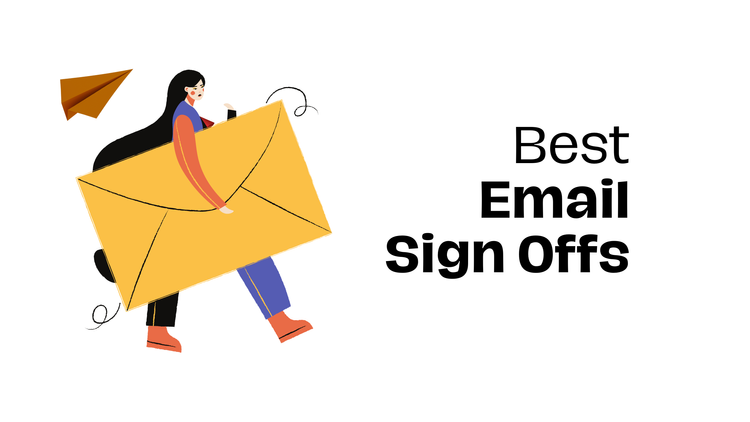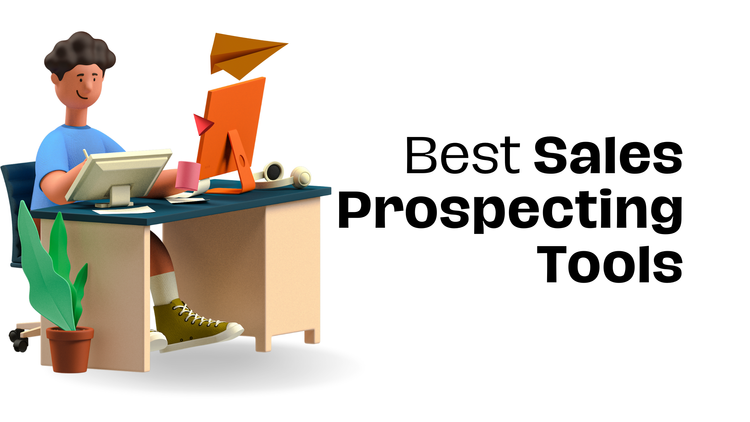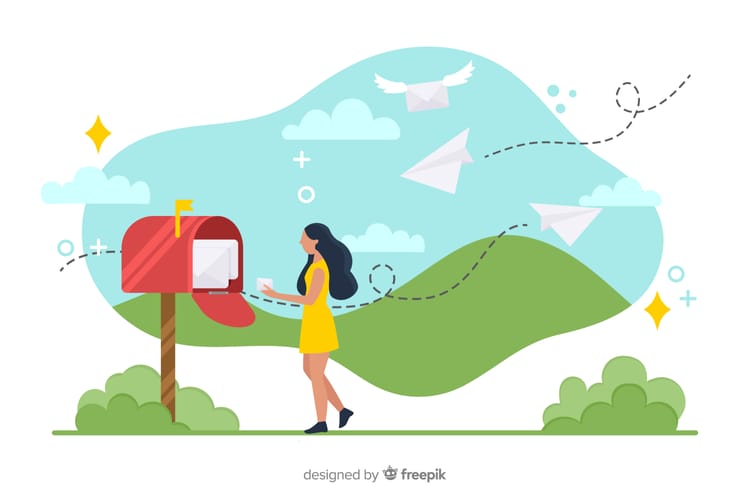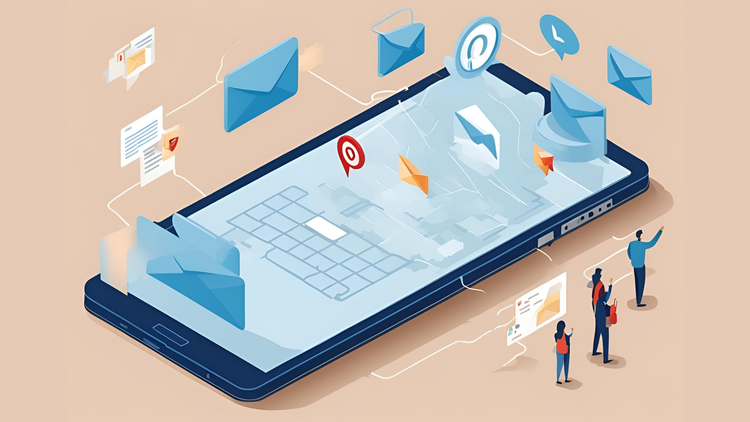10 B2B Lead Generation Strategies for 2025
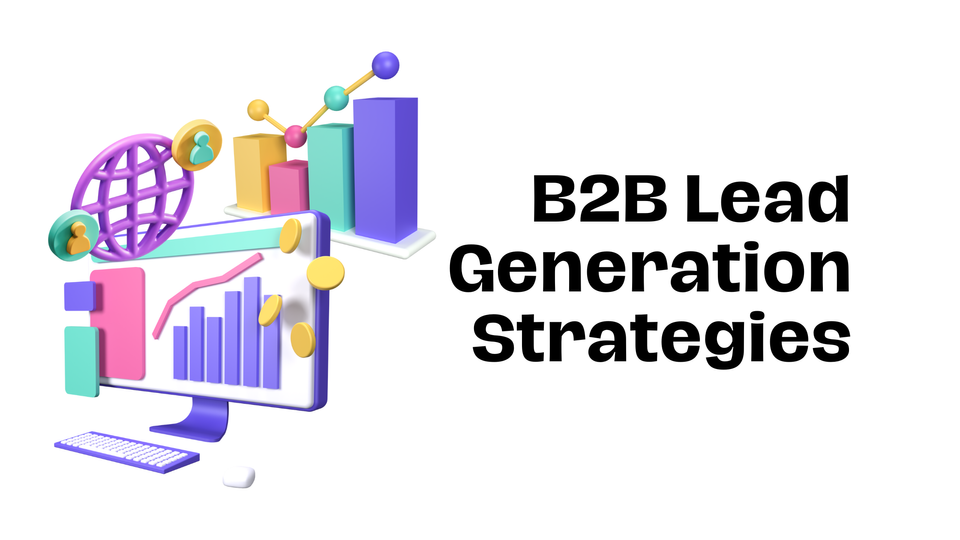
B2B lead generation strategies aren’t just about collecting leads—they’re about attracting high-value prospects who actually convert. Without a smart approach, you're just wasting your time.
This guide cuts through the noise and gives you battle-tested B2B SaaS lead generation strategies that actually work—so you can stop guessing and start converting.
What Are B2B Lead Generation Strategies?
B2B lead generation strategies are the key to filling your sales pipeline with high-quality prospects. If you're struggling to attract the right leads, you're not alone—many businesses face the same challenge. Unlike B2C marketing, these strategies focus on targeting decision-makers through LinkedIn prospecting, content marketing, email outreach, and paid ads. Let’s dive in.
10 Best B2B SaaS Lead Generation Strategies
Here are 10 of the most effective B2B SaaS lead generation strategies you can implement in your business in 2025.
#1 Segment your email lists and personalize your content
Segmenting your email lists allows you to send more relevant, more engaging emails to your leads. By splitting up your prospective customers based on criteria such as the products they’re likely to be interested in or the industry they operate in, you can improve your email open and click-through rates.
Personalizing the content of your emails is another great way to increase their effectiveness. Personalized emails, even if they simply include the recipient's name in the subject line, are more likely to be opened and engaged with.
#2 Create SEO-friendly content to attract organic traffic
SEO can help generate leads organically by optimizing your content with features such as keywords and metadata, you can ensure that your content appears higher on SERPs (Search Engine Results Pages). This improves the chances of your target audience finding it, increasing the amount of organic traffic that is driven to your website. You can also leverage AI for SEO to speed up processes and enhance scalability.
#3 Host webinars or online events to engage prospects
Webinars and other online events are a great way to engage prospects from around the world. They give you a way to show off the key features of your products and services directly to your target audience in an informational and educational way.
Webinars are usually live events, which gives you the opportunity to interact directly with your audience to build meaningful relationships with potential customers. Once the webinar is finished, you can repurpose the content for a variety of other marketing endeavors such as podcasts or blog posts.
#4 Offer incentives to encourage customer referrals
Your existing customers are likely to have contacts operating in the same industry who may require your products and services. A positive recommendation or referral from someone who has first-hand experience with your company is always a powerful marketing tool, and leads generated from referrals often score well.
One way to encourage referrals is to incentivize them among your existing customers. For example, you could offer discounts on future orders when a referred customer makes their first purchase.
#5 Run targeted social media advertising campaigns
Posting general ads on social media isn’t usually effective for B2B companies, as there’s a good chance that their intended audience might never see them. Targeted social media advertising campaigns, however, can be very effective.
It’s important to implement these campaigns on social networks where your target audience is likely to be present, such as LinkedIn. You can then implement precise targeting options to boost the chances that the right people will see your ads. For example, on LinkedIn, you can target by job title, industry, company size, and seniority.
#6 Implement account-based marketing (ABM)
Account-based marketing (ABM) is a strategic B2B marketing approach that involves focusing on engaging specific high-value accounts or companies.
Targeting specific accounts allows marketing and sales teams to work together to build highly personalized campaigns that will resonate with the needs, goals, and challenges of those leads, maximizing the chances of a conversion.
#7 Collaborate with complementary businesses for wider reach
Collaborating with complementary businesses in a B2B context can help both you and the businesses you partner with to expand your reach, access new markets, and drive mutual business growth.
Examples of collaborations with other businesses you could try include:
- joint marketing campaigns
- co-branded content as part of a B2B SaaS content marketing strategy
- cross-promotions
- Product bundles
- referral programs
#8 Develop interactive tools to capture leads
Interactive tools are a great way to engage your audience by providing an immersive experience, while at the same time capturing leads.
For example, you could develop interactive quizzes related to your industry or niche. These offer users the opportunity to assess their knowledge and skills in exchange for providing their contact information.
Calculators and estimators are other popular interactive tools, designed to help users calculate costs, savings, or returns related to your products or services. By allowing users to input their specific data to personalized results, you can truly show off the value of your product to those who would benefit most from it.
#9 Design optimized landing pages for conversions
Your landing pages will often form a first impression of your website and your brand for potential customers. That means optimizing them is essential for converting leads into paying customers.
Make sure that the value proposition of what you’re offering is clearly communicating with concise, compelling messaging. An attention-grabbing headline, eye-catching visuals, and a clear call-to-action will all help with this.
If you’re not sure where to start or want expert help, consider working with a landing page optimization agency. They’ll bring in data-driven strategies, A/B testing, and design know-how to turn your landing pages into high-performing conversion boosters.
#10 Launch remarketing campaigns for re-engagement
Remarketing campaigns, also known as retargeting campaigns, target users who have previously visited your website or interacted with your brand in some way, but did not complete a desired action. Implementing a remarketing campaign gives you a chance to re-engage with these users, encouraging them to return to your website and complete the desired action.
These campaigns rely on tracking visitors to your website through the use of cookies or pixel tags. You can then segment the users you wish to re-engage based on the actions they did perform, such as which products they viewed.
From there, you can issue targeted ads that encourage them to revisit your website, possibly even offering additional incentives for doing so.
#11 Capture qualified leads at trade shows with engagement tracking
Trade shows put you in front of decision makers with real budgets. But most companies leave these events with a pile of business cards and no clear way to prioritize who to follow up with first.The difference between a good trade show and a waste of money comes down to tracking engagement, not just collecting contacts. A digital signage dashboard displays which booth visitors spent time with your content and which specific products or features they explored. This data enables your sales team to focus on warm leads who have already shown interest, rather than cold calling everyone who stops by.After the event, segment your leads based on their engagement patterns. Someone who interacted with your pricing calculator for five minutes is more qualified than someone who grabbed a pen and left. Use this information to personalize your follow-up emails and mention the specific topics they explored at your booth.
Checklist before you start generating leads
There are a few key steps that you should take before you begin generating leads.
Define your ideal customer profile (ICP)
An ICP is a detailed description of the type of customer that will derive the most value from your product or service. Defining your ICP will help you to identify and target your most promising prospects, giving you the best possible chance of ultimately making a sale.
Think carefully about what pain points your product or service is best positioned to solve, and what type of businesses are most affected by those particular challenges. You can use a company data enrichment API to provide detailed firmographic data, helping you identify businesses that closely match your ideal customer profile.
Set SMART goals for lead generation
SMART goals are:
- Specific
- Measurable
- Achievable
- Relevant
- Time-bound
Setting yourself targets that fulfill these criteria will help you to measure how successful your lead generation efforts have been, and will provide you with insights on how you can refine the process in the future.
SMART Goal Example: By November 30th, 2024 (time-bound), increase the number of qualified B2B leads from technology companies with annual revenues over $10 million in North America (specific) to 50 new leads per month (measurable and achievable) through targeted LinkedIn ads, content marketing, and email campaigns (relevant).
Identify your marketing budget and resources
Marketing is one of the key ways in which you’ll reach your prospective customers. It’s important to have a clear idea of what resources are at your disposal when it comes to both budget and resources. That way, you can develop a marketing strategy that targets your most promising leads, without overstretching your resources.
Choose the right marketing channels
A crucial aspect of any marketing strategy is knowing which channels to use. Certain customers may be easier to reach through specific channels, so you should use your ICPs to determine which channels are likely to give you access to the largest target audience.
Channels you could consider targeting include:
- Email marketing
- Content marketing e.g. blogs, articles
- SEO (Search Engine Optimization)
- Social Media e.g LinkedIn
- Webinars & online workshops
Integrate CRM for lead tracking and management
Integrating a customer relationship management (CRM) platform gives you a centralized platform from which you can track and manage your leads.
This gives you improved visibility over your prospective customers, so no matter which member of the sales team is dealing with them, they’ll have access to a full record of their status, previous interactions, and engagement levels.
Using a CRM will also allow you to score and prioritize your leads, so you can ensure that the most promising prospects are given the most attention.
Audit your website's lead capture functionality
The lead capture functionality of your website can include a few key elements:
- Newsletter sign-up forms
- Contact forms
- Pop-up forms
- Call-to-action (CTA) buttons
- Landing pages
- Live chat
Ensuring that these elements are optimized for ease-of-use and visibility is essential for maximizing their effectiveness.
For example, lead capture forms should include all the appropriate fields to capture vital contact information, without being too long or complex. Live chat windows should be well signposted for maximum visibility, without obstructing the view of other key website features.
Align your sales and marketing teams
Aligning your sales and marketing teams allows you to provide a seamless customer experience for your leads as they progress through your sales funnel, facilitating better personalization, better insights into customer behavior, and ultimately an overall shorter sales cycle.
Conclusion
There are loads of different B2B SaaS lead generation strategies that you can implement to great effect for your company.
From interactive methods like webinars that engage your target audience, to carefully crafted emails and content that highlight the best features of your products and services, there’s a strategy to suit every business.
Regardless of which strategy you choose to try, make sure you prepare well before-hand. Align your sales and marketing teams, choose your channels carefully, and make sure you have the right tools in place to capture and track your leads through your sales funnel.

